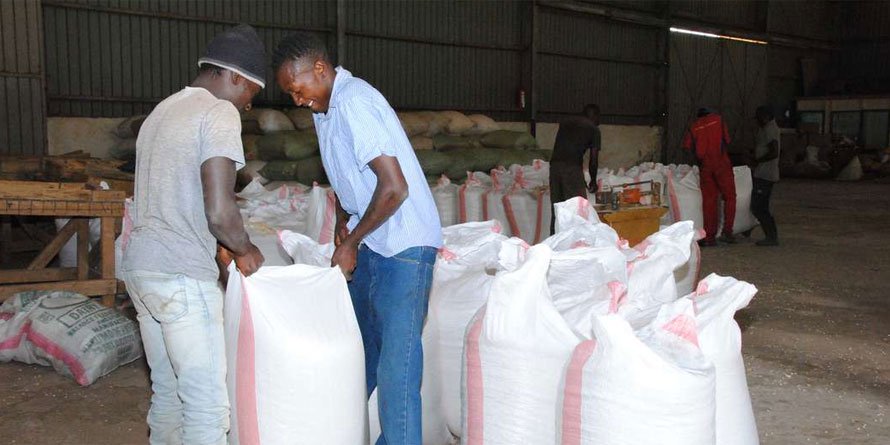Maize farmers can now sell their produce to the National Cereals and Produce Board following a directive issued on 10th January by Kenyan President Uhuru Kenyatta to the Cabinet Secretary, Agriculture at State House, Mombasa.
The president authorized the opening of buying centers and stores across the country. Initially, some farmers were selling to millers at an average price of Sh2100 per 90 kg bag, while some had hoarded the produce waiting for the cereal board to purchase.
Kenyan farmers have been experiencing a hard time in the last one year trying to sell their produce due to a failure by the ministry to release funds. Some farmers have not received payment for the whole of 2018, this has affected their income and some have switched to horticulture farming, which is the fastest growing sub-sector of Agriculture in Kenya.
Related content
KALRO launches eight new maize varieties resistant to the lethal necrosis viral disease
How to reduce post-harvest losses in maize by 20 to 30 per cent
Scientists design a more productive maize to cope with harsh climates

“I used to plant maize but late payments by NCPB made me changed my mind. After delivering 120 90kg bags of maize in 2017 I stayed for nearly eight months before being paid and this led me to switch to pineapple farming which now earns me Sh20,000 weekly,” said Salome Maina, a farmer in Nandi.
However, following the directive by the government, there is hope that things will get better. The maize marketing board will buy a 90kg of maize at Sh2,500 down from Sh3,200 in 2018.
“A farmer who would like to deliver maize to us has to undergo vetting to enable us identify genuine maize farmers,” said Bonness Cheruiyot an officer at the National Cereals and Produce Board.
The vetting process involves farmers obtaining claim forms from their nearest ministry of agriculture office. The claim forms are to be accompanied by three copies of the national identity card, Kenya Revenue Authority PIN certificate and three passport photos to be certified by the area chief.
Other items required are the recipient bank details, weighbridge ticket and original delivery note which are attached to the claim form.
“During delivery the maize’s moisture content is checked in a process that takes roughly fifteen minutes. The moisture content should be not more than 13.5 per cent,” said Cheruiyot.
After delivery the farmer will then be paid through his/her bank account directly within a period of one week, although this may vary depending on availability of funds.
There was a 44 per cent increase in maize production from 32m bags recorded in 2017 to 46m bags in 2018 driven by sufficient rains and reduced impact of the Fall Armyworm according to the Ministry of Agriculture.
Kenya consumes at least three million bags of maize monthly according to the Kenya National Bureau of Statistics. The crop is used to make ugali, a dish made out of maize flour and a staple food in Kenyan households.
In 2017, the shortage of Kenya’s staple food maize, led to increase in maize flour prices from an average of Sh110 to Sh150 for a two kilogram packet forcing the government to subsidize the cost through imports.
In this, the government imported more than 100,000 tonnes of the produce to curb shortage thus allowing millers to sell a 2kg packet Sh90 each, a big relief to more than 70 per cent of Kenya’s 46m people who depend on the crop as food and for commercial purposes.
















Comments powered by CComment